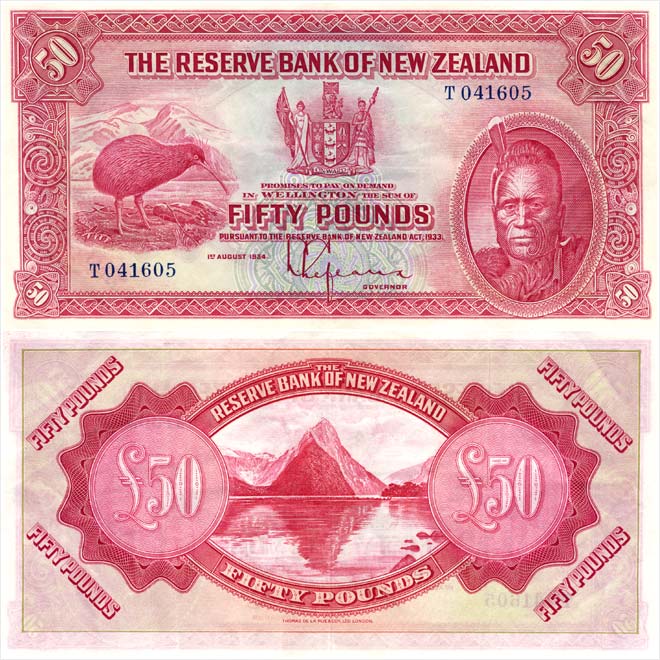
The first-series £50 banknote is red. The carvings on the side are based on door-frame carvings from an early-19th-century Te Arawa wharenui (meeting house) in the Rotorua lakes area. The carving was acquired by Thomas Gillies and gifted to the Auckland Museum in 1877. The kōwhaiwhai (rafter) pattern is called Kōwhai Ngutukākā, and is based on the kākā beak, a native plant. The pattern is said to represent placing the interests of family and country before personal welfare. The zigzag kaokao pattern represents strength. On the back, the denomination is written in numerals and words.
Using this item
This item has been provided for private study purposes (such as school projects, family and local history research) and any published reproduction (print or electronic) may infringe copyright law. It is the responsibility of the user of any material to obtain clearance from the copyright holder.














Add new comment